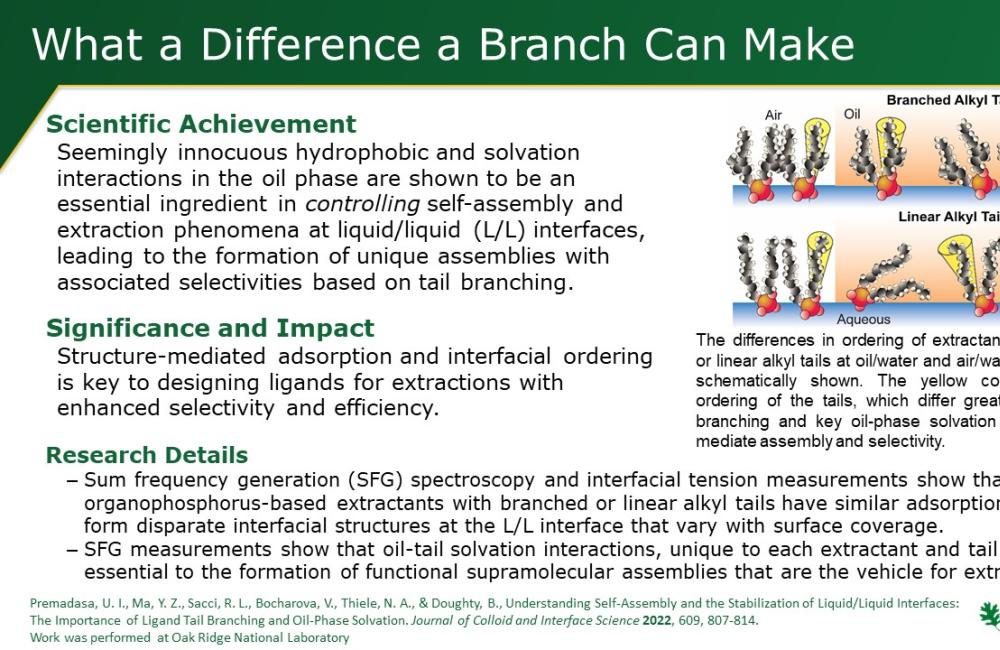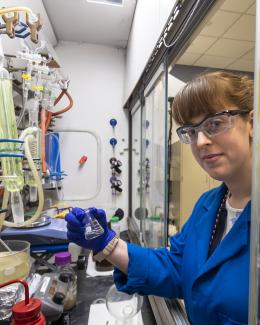Organophosphorus-based ligands represent a versatile set of solvent extraction reagents whose chemical makeup plays an important role in extraction mechanism. We hypothesize that the branching of the extractant hydrophobic tail and its oil-phase solvation affect the liquid/liquid interfacial structure. Understanding the structure mediated adsorption and interfacial ordering becomes key in designing ligands with enhanced selectivity and efficiency for targeted extractions.
We employed vibrational sum frequency generation spectroscopy and interfacial tension measurements to extract thermodynamic adsorption energies, map interfacial ordering, and rationalize disparate behaviors of model di-(2-ethylhexyl) phosphoric acid and dioctyl phosphoric acid ligands at the hexadecane water interface.
Results: With increased surface loading, ligands with branched hydrophobic tails formed stable interfaces at much lower concentrations than those observed for ligands with linear alkyl tails. The lack of an oil phase and associated solvation results in markedly different interfacial properties, and thus measurements made at air/liquid surfaces cannot be assumed to correlate with the processes occurring at buried liquid/liquid interfaces. We attribute these differences in the surface mediated self-assembly to key variations in hydrophobic interactions and tail solvation taking place in the oil phase demonstrating that interactions in both the polar and nonpolar phases are essential to understand self-assembly and function.








